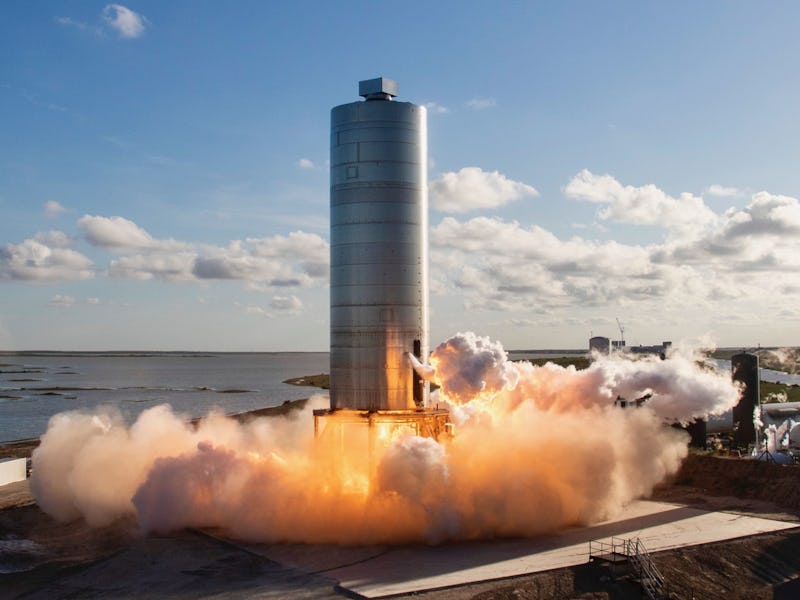SpaceX Starship: Elon Musk outlines next steps for 'crazy tall' ship
SpaceX is expected to hold more test flights for the Starship, the under-development rocket set to send humans to the moon and Mars.

The Starship, SpaceX's most ambitious rocket to date, is about to embark on more test flights.
The company's successful first test flight for the rocket, which sent the "SN5" prototype soaring 150 meters into the air, has sparked discussion about where the company plans to go next. On Saturday, CEO Elon Musk claimed on his Twitter page that the company now plans to host more flights – perhaps more than one per day.
In response to a question from Tim Dodd, host of YouTube channel "Everyday Astronaut," about the next steps for "SN5", Musk responded:
"Not sure yet, but hopefully. Will need leg & other repairs. Probably SN6 flies before SN5. We need to make flights simple & easy — many per day."
Musk also responded to an image that demonstrated the impressive size of the prototype. Musk wrote:
"It will look crazy tall with booster & fairing at 122m / 394 ft"
The response sheds more light on what SpaceX plans for its ambitious rocket project. The Starship was first unveiled in September 2017 under the name "BFR," a fully-reusable ship that can transport up to 100 people or 150 tons into space at a time. The ship is designed to send satellites and other cargo into space, replacing the Falcon 9 currently in use, while also enabling astronauts to travel to the moon, Mars and beyond thanks to a "planet-hopping" network of fueling stations.
Musk's latest comments come after he previously explained the company plans to host several jumps with the Starship prototype to smooth out the flight process. Last week, he claimed the goal would be to host several short "hop" launches, before moving onto higher altitude launches that employ body flaps.
The company first flew a smaller version of the Starship back in August 2019. The smaller ship, dubbed "Starhopper," flew to the same 150 meter height using a single Raptor engine. The ship measured just 18 meters (60 feet) tall but sported the same nine-meter (30 feet) diameter as the planned final ship. The following month, Musk unveiled a full-size prototype of the ship dubbed "Mk.1" with a 50-meter (164 feet) height.
The ship that flew last week lacked many of the cosmetic features that will be found on the final ship, like a nosecone that houses the cargo area. It also only featured one Raptor engine, placed asymmetrically as the "SN5" was originally set to use three engines. The final ship is expected to use six engines.
It did, however, give fans a good idea of the sheer scale of the final ship. An image shared on Twitter by "RGVAerialPhotography" shows the prototype in comparison to tiny people on the floor:
Musk noted that the ship would measure a staggering 122 meters, or 394 feet, when paired with the Super Heavy booster. This is expected to use up to 37 engines to help the ship leave Earth. Musk explained that two of the meters come from fixed legs on the booster, which add extra height.
Musk has set himself the ambitious timescale of getting the first cargo Starships to Mars by 2022, followed by the first humans as early as 2024.
The Inverse analysis – Musk's comments reveal what we can expect for the next stages of the Starship project, as it continues working toward hosting its first full-scale flight. The ship is being designed with full reusability in mind, and Musk has previously suggested that one Starship could fly 1,000 times per year. With that in mind, it's perhaps little surprise that the hop tests are focusing on fast flights that can help collect as much data as possible.
Beyond sending humans to Mars, it's these fast flights that could help Starship have a massive impact on the spaceflight industry.
This article was originally published on